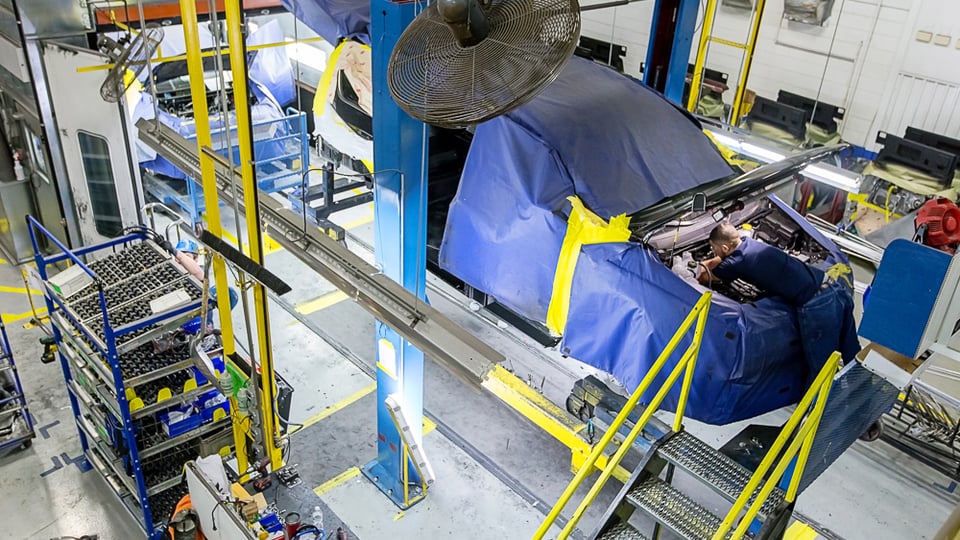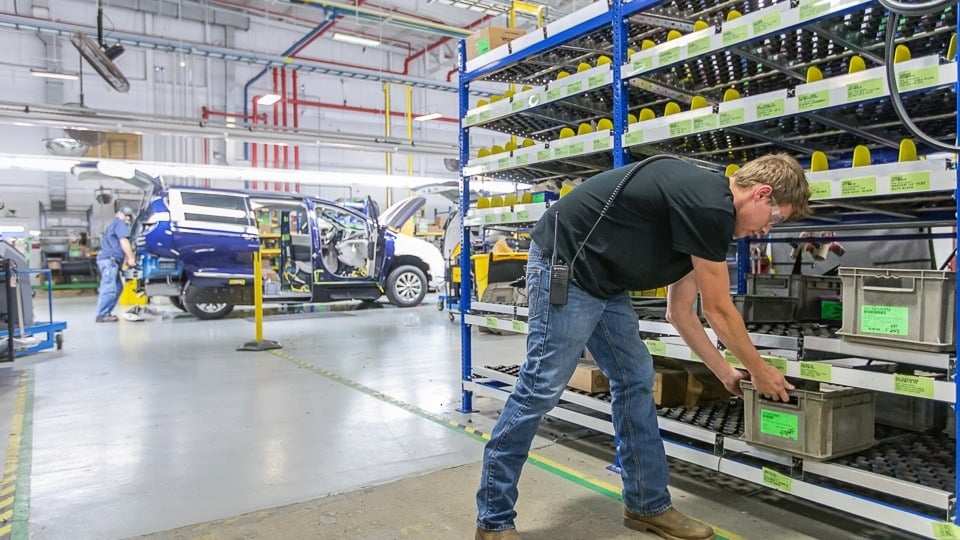Manufacturing Supply Chain: Tackling COVID-19 Storage Challenges
Far-reaching disruptions across supply chains can be addressed through improved manufacturing storage solutions.

Manufacturing is a complex space and typically involves global supply chains. Due to COVID-19, manufacturers are seeing disruption across every area of the supply chain.
Manufacturers considering re-shoring, near-shoring, or offshoring will need to maximize storage space, reduce downtime, and address rising operating costs. And with manufacturing as the starting point, it’s important to make sure that storage challenges are addressed in order to properly optimize the supply chain.
Supply Chain Optimization for Manufacturing Warehouses
Maximizing space to store more inventory
Many operations are currently faced with moving offshore production back onshore. That involves holding more inventory in the US than usual. This adds a new level of stress in ensuring new US spaces can be set up quickly, efficiently, and cost-effectively. Focusing on proper space utilization is one of the top ways to ensure a smooth transition that won’t break the bank.
For manufacturers, organization directly impacts productivity and return on investment, as poor organization leads to disrupted workflows. And with a potentially new, and smaller, US space, it’s critical to get it right the first time. By analyzing your space and flow, it is possible to minimize moving equipment to reduce costs and downtime while still optimizing the space to ultimately gain storage capacity.
Utilizing carton flow in a modular rack, like SpanTrack carton flow rollers or wheel beds in a FlowCell flow rack, facilities can gain up to 80 percent more space due to the compression of the pick window. This enables a facility to increase storage density while guaranteeing an ergonomic selection at the pick point as well.
Related Article: Integrating Ergonomics with Lean Manufacturing Processes
Reshoring manufacturing means industrial applications come into play that are slightly-more-than storage applications or leveraged differently. Thus, the ability to store more lineside becomes increasingly important. Storing more lineside can result in less production holdups, as parts run out less frequently. Or, having just the right amount of parts lineside can enable manufacturers to shrink their production to make it more efficient. By ensuring that line workers are spending more time working and less time walking around looking for parts, manufacturers can save both time and money.
Manufacturers of all sizes can benefit from right-sizing storage as well. By right-sizing storage products and equipment, facilities can free up real estate by only storing what is necessary for an hour, shift or production run on the line. This helps manufacturing facilities reduce the required storage space and shorten the production line to improve overall productivity.
Lineside racks like FlowCell can also prevent overstocking of parts in the most critical space in a facility and shift it to a less sensitive area like the warehouse or supermarket. In fact, one of our clients, Daimler, did just that with FlowCell.
Client Case Study: Daimler
Daimler Trucks Components & Logistics needed to improve space, speed, and accuracy at their North Carolina location. To do this, they wanted to transform an older storage, picking and lineside sub-assembly system into a more agile operation.
UNEX designed a grocery store-type setup using FlowCell with 6-inch wide SpanTrack Lanes. After testing 40 racks to see if the solution would work for the facility, the pick area now includes 2,600 SpanTrack Lanes. They take up a third less space and enable the facility to get more product in the same footprint. In addition, the UNEX system provides high visibility and accessibility, creating a quick and accurate pick point for employees.
Download the case study to learn how Daimler used FlowCell flow racks to fit more products in their existing footprint and keep lines moving quickly.
Boosting productivity to do more with less
Holding more inventory in the US means cramming inventory into a small space that can cost manufacturers in terms of productivity. COVID-19 has shifted supply chain conversations from cost efficiency to adaptability and productivity. By incorporating lean principles of manufacturing, wasted space and time can be reduced greatly.
A dedicated high-density storage system provides a place for everything. The SpeedCell dynamic storage system offers defined, labeled locations for slower-moving parts and creates fixed locations for infrequently used items like maintenance and service parts as well. This increases storage density by 500%, reducing both travel and search time.
Carton flow solutions, such as SpanTrack, feature dedicated lanes for specific boxes as well as various labeling and guiding systems. These fixed locations eliminate the need for pickers and replenishers to search for inventory, saving your operation time, and boosting productivity. And when totes flow to the front, users don't have to bend or struggle to pick items or full containers. Interactions become predictable, teachable, and repeatable to optimize performance throughout the warehouse.
Addressing rising operating costs
With supply chains being disrupted at a global scale, operating costs have seen a spike. And with the need for many manufacturers to move back onshore, costs need to be minimized wherever possible. In order to optimize supply chains, manufacturers must first optimize their warehouse space. By maximizing space and boosting productivity, manufacturers will be able to better address the rising operational costs they are facing. And by optimizing a new onshore space for maximum efficiency, time can be saved and operational costs can be reduced. We’re seeing supply chain issues at a greater scale than ever before, and manufacturing is the first piece of the puzzle that needs to be addressed.
Learn more: How UNEX FlowCell Modular Structures Reduce Maintenance Costs
Discover solutions for maximizing space, increasing efficiency, and reducing costs despite major supply chain disruptions.
Connect with a UNEX space optimization specialist to discuss options for improving processes and maximizing storage space across key areas of your facility.





